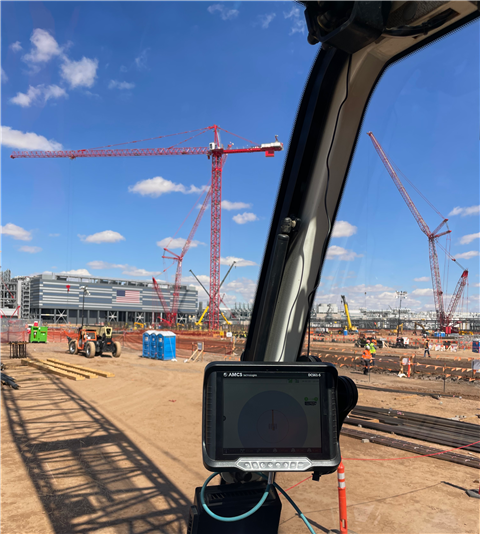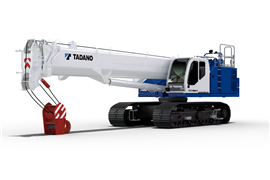World-first collision avoidance technology between mobile and static cranes
05 May 2023
 AMCS Technologies is using its DCS 61-S crane safety system for collision avoidance between tower and crawler cranes on a major project in Chandler, Arizona, USA. Photo: AMCS Technologies
AMCS Technologies is using its DCS 61-S crane safety system for collision avoidance between tower and crawler cranes on a major project in Chandler, Arizona, USA. Photo: AMCS Technologies
To help prevent collisions on site AMCS Technologies was brought in to manage the interference between crawler cranes and tower cranes on a large and busy jobsite in the USA.
The French safety technology specialist said it is a world first that its DCS 61-S system is now managing interferences between the tower and crawler cranes. The cranes are owned by Maxim Crane Works.
The construction project is a major high tech industry site in Arizona where multiple cranes of different types are working together, at the same time. To avoid incidences of crane boom and rope clashes, especially here where there is an increase in the use of mobile machinery on site, the DCS 61-S responds both to safety and work efficiency issues. It adapts to the environment of immediate decision-making and other daily jobsite needs while ensuring productivity and safety with a single product, the company said.
The site in question is the construction of two computer chip factories in Chandler. AMCS Technologies is managing the interferences between 14 Manitowoc and Liebherr crawler and three Potain tower cranes owned by Maxim Crane Works. The DCS 61-S automatically detects the movements of the crawler cranes and integrates it with the control of the tower cranes. Communication between the cranes is via a wireless network and they permanently know the locations via GNSS antennae.
Tracking the mobile cranes
When the crawler cranes move around the site to work, the tower cranes automatically know their positions and the system creates an interference zone. The DCS 61-S calculates in real time and in 3D the distances between each element of the cranes as well as the speeds of movement so it can intervene on the control mechanisms of the cranes, slowing the tower crane and then immobilising it at a pre-set distance from the mobile machine.
On the crawler crane an increasingly loud sound signal is emitted as it approaches the prohibited area or interference zone.
“Through this new experience, we continue to do what we do best: make jobsite safer places to work and empower our customers with this major concern. It’s an inspiring win-win combination. It’s very exciting and provides so many opportunities for high-quality service,” Radoine Bouajaj, AMCS Technologies sales director, said about this project.
Anthony Lanza, Maxim Crane Works western regional tower operations manager, commented, “We can tell that we have had success preventing crane-to-crane contact from our crawlers to tower cranes. Once the systems were installed, this has been a great asset for us to use. Being able to have a safety net like this with the number of cranes onsite is definitely a benefit.”
STAY CONNECTED


Receive the information you need when you need it through our world-leading magazines, newsletters and daily briefings.
CONNECT WITH THE TEAM











